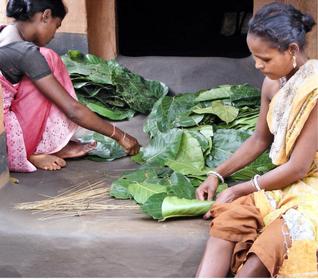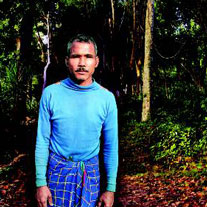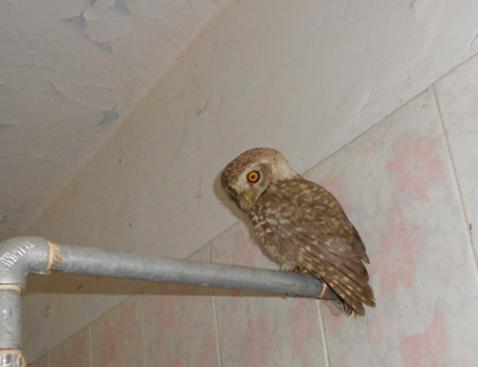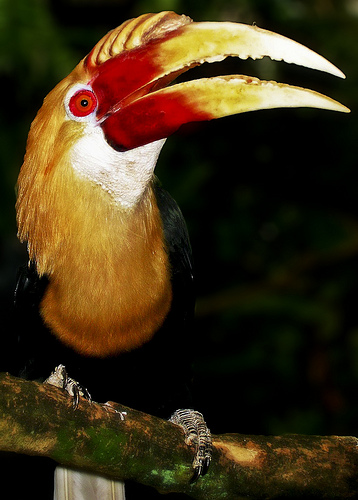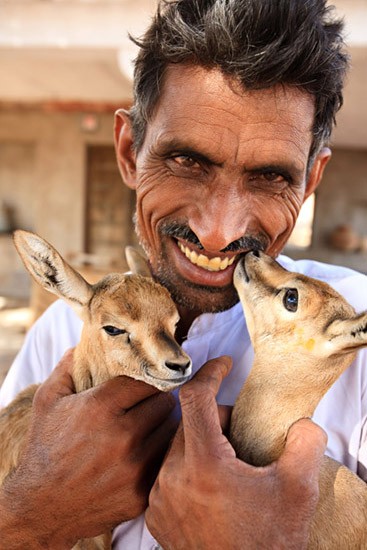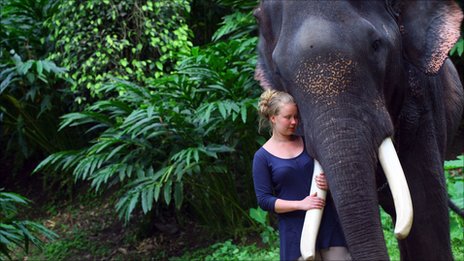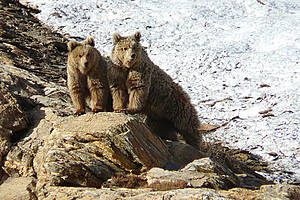Manchabandha Reserve Forest in Orissa is home to humans as well as wildlife. They co-exist in harmony and peace. The Sal trees that cover the forest area form the chief source of food and income for the local tribes like Santhal, Kolha and Lodha who live in the nearby villages in the Mayurbhanj district. The chief economic activity of the tribal women is making Sal leaf plates. They also gather other forest products like mushrooms and the Mahua flowers.
A Man who Made a Forest
Nothing is simpler than planting a tree and yet not many really pick up the spade to toil under the sun and nurture a plant. That is why what Jadav Payeng has been doing for the past 30 years is incredible. He has not only made tree plantation a life time hobby but converted a barren land into a lush green 550 hectare forest in Assam which is now home to five tigers
Saintly act Saves Endangered Forest Owlet
For Swami Mahadevanand Saraswathi life is sacred, no matter if it is that of a human or an animal. It is this belief that led him to rescue two critically endangered forest owlet from a cage and keep them safely at his home in Varanasi until rescuers from UK helped him release the birds into the wild.
Interview: a j mithra, Making Music with Animal Calls
Chirrups, squeaks, roars and howls may not be much more than animal calls for most of us but for one man these are music to his ears quite literally. a j mithra is a self taught Zoo musicologists, someone who uses animal sounds to create music.
Artificial Beaks help save the Hornbills
On the foothills of the eastern Himalayas in the State of Arunachal Pradesh lies Pakke Tiger Reserve. The park is proud to have four resident hornbill species but the area is also home to the Nyshi tribe, whose illustrious headgear includes a hornbill beak. But now fibre replicas of the beaks have helped save the birds from being killed for their beaks, at the same time also saving the age-old identity and headgear of the tribe.
Bishnois: Environment Crusaders by Birth
The Bishnoi community of Rajasthan is the kind of community the makers of the movie Avatar would have been inspired from. These worshippers of nature, live by only one code of conduct and that is to live and let live, without bringing harm to any of Mother Earth’s creatures. From creating havoc in one gun loving film star’s life to living each day following the 29 principles revolving around loving and protecting the environment, this community is the role model India and the world needs if we seriously want the Earth to live on.
Villagers give up their Land for Elephants
Villagers in Kerala, have displayed a grand gesture by vacating their agrarian village for elephants because it is a vital elephant corridor. To support the 63,000 elephants roaming in the parts, the villagers have opted for resettlement.
Finnish Woman set to become First Woman Mahout
When Laura Puukko visited Kerala last year she never thought that the trip would give an altogether new direction to her life. Smitten by the elegant Indian elephants, Laura is set to become the first woman to become a mahout in Kerala
Saving One Baby at a Time
The Grizzled Giant Squirrels are a species endemic to the Western Ghats of India. It is in the same region that the native Paliyan tribe has been living for centuries. While modern civilization has touched their lives only recently, these tribesmen continue to harbor their affection for nature and all its creatures. That is why when a baby grizzled giant squirrel fall from a tree nest accidently, it is safely nurtured in the tribal homes.
One Man Making Desert Lands Greener
Madan lal Punjabi of Jaipur, Rajashtan is a man with a mission. In a span of 7 years, he has planted 1,600 saplings for the benefit of Jaipur residents to provide green cover to the city and solace to people from the hot sun. Himself in the golden years of his life, so deep is Madan lal’s commitment to the cause that he says the trees our like his own children and he will continue to care for them till his last breath.
Brown Bear Mother and Cub Caught on Camera in Kargil
Aishwarya Maheshwari has a job to envy. As the Senior Project Officer with WWF-India’s Snow Leopard Project in Kargil region of Jammu and Kashmir, he not only gets to spend much of his time in one of the most beautiful places in the world, but can also catch a glimpse of wild species not often seen or heard. On one such lucky expedition he chanced upon a pair of brown bears, mother and son searching for food and roaming around in the wilderness of the Trans-Himalayan region.

